The History Behind Medical Coverage For The Linx Reflux Management System
Nearly two years ago, Torax Medical, a privately-owned medical device company that develops and markets products designed to treat sphincter disorders, rocked the Gastroenterology world with a huge announcement. On the 1st of April 2016, Health Care Service Corporation — the fourth largest commercial health insurer in the United States — instituted a medical coverage policy for the LINX® Reflux Management System. It was a huge win for the world of GERD, where physicians and patients had spent years battling for the Linx surgery to be covered by insurances.
The LINX® Reflux Management System, more commonly referred to as LINX®, is a string of titanium-wrapped magnets that rings the lower esophagus and tightens it, helping keep down food, bile, and stomach acid. The magnetic attraction between the beads helps maintain the sphincter barrier function and prevents reflux. In 2012 the FDA unanimously approved the device, which is implanted using minimally invasive laparoscopic surgery. Getting it approved by insurance companies, however, was not so simple.
Insurance coverage has been a huge point of contention in the reflux world for a while now. Previously, the Linx surgery was covered under Medicare, but even though it had been four years since Linx entered the market, most commercial insurance companies still refused to provide a medical coverage policy for the procedure. Needless to say, it was a huge source of frustration for both patients and physicians, especially since many more invasive anti-reflux surgeries are covered by the majority of insurances.
Commercial insurance companies initially complained that, despite its unanimous approval from the FDA, they still considered the LINX® Reflux Management System “investigational” and “too new to cover”. They wanted more time to study how the device performed in comparison to already existing anti-reflux alternatives like the Nissen fundoplication surgery, a procedure where a reflux barrier is created by wrapping a portion of the patient’s stomach around the lower portion of the esophagus.
After four more years of overwhelming evidence legitimizing the LINX® Reflux Management System as an effective, cost-efficient, minimally invasive solution for severe cases of chronic GERD, it looked like the commercial insurance industry was finally coming around. Health Care Service Corporation is a massive insurer, and as a result of the new medical coverage policy the LINX® procedure become accessible to over 15 million patients through their affiliate organizations (Blue Cross & Blue Shield of Illinois, BCBS of Montana, BCBS of Oklahoma, and BCBS of Texas).
Finally, in November 2017, the American Medical Association assigned the LINX® Reflux Management System as a new Category 1 Current Procedural Terminology (CPT®) Code for esophageal sphincter augmentation. The assignation established the LINX® procedure as a first-line, minimally invasive treatment option for GERD.
There’s still a lot of work to be done before LINX® is granted the coverage it deserves across the board by commercial insurance companies, but this is a massive step in the right direction. We can only hope that more and more companies see the value LINX® offers to patients suffering from chronic GERD, and that slowly but surely we continue to work towards the day when medically necessary procedures like LINX® are covered for every patient.
If you’ve been diagnosed with GERD and continue to have symptoms despite the medical and lifestyle treatments you’ve undergone, the LINX® Reflux Management System might be the answer to your problems. Feel free to contact us or to schedule a consultation to learn more about the procedure, or if you have insurance coverage concerns. Our front office team will handle any negotiations for coverage with your insurance provider, and has a very high success rate at obtaining partial and full LINX® coverage for patients.
